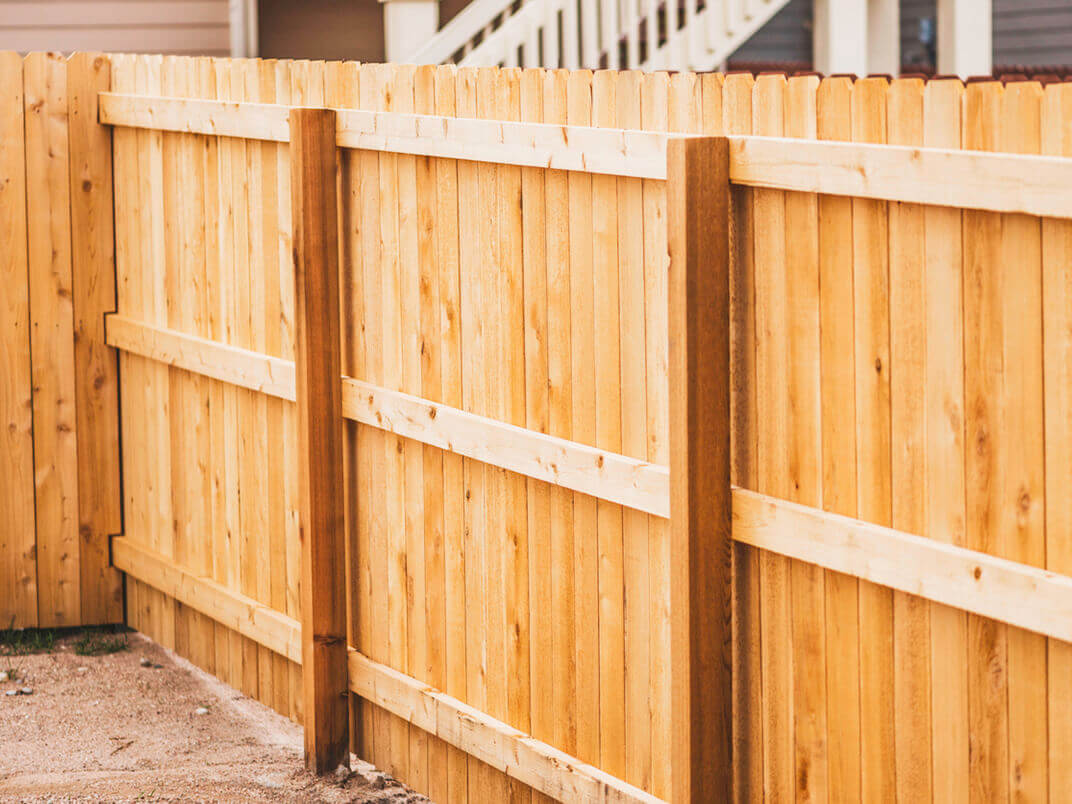All Categories
Featured

Fencings are a fundamental part of your property, supplying personal privacy, safety and security, and visual worth. Nonetheless, they are continuously subjected to the components and can experience from weather-related damage in time. Whether it's strong winds, rainfall, snow, or intense warm, weather can slowly compromise your fence, leading to costly repair work or substitute. The good news is, there are several actions you can require to shield your fence from weather-related damage and prolong its lifespan. Right here's just how you can secure your fencing against the components.
- Select the Right Material. The kind of material your fencing is made from plays a significant function in just how well it will endure weather condition problems. Some products are normally a lot more immune to damages than others. For instance:
Wooden Fences: While attractive and traditional, wood can be susceptible to wetness, rot, and bugs. Pressure-treated timber or cedar can use better resistance to these concerns. Vinyl Fencings: Vinyl is highly immune to moisture, rot, and bugs. It additionally stands well to severe sun and heavy rainfall. Metal Fencings: Wrought iron or aluminum fencings are sturdy and can endure a selection of weather. They can, nevertheless, deal with corrosion gradually, especially otherwise properly coated. Compound Fences: Made from a blend of timber fibers and plastic, composite fencings are more resistant to weather-related damage compared to conventional wood fences. Choosing the right material for your area's environment is the very first step in shielding your fence from weather damage.
- Seal or Spot Wooden Fences. Wooden fences are especially prone to damage from wetness, UV rays, and temperature variations. One of one of the most reliable methods to shield your wood fencing is by using a safety sealer or discolor. These products help:
Protect Against Water Damages: Sealers create a water-resistant obstacle, preventing dampness from permeating right into the timber and causing mildew, mold and mildew, or rot. Safeguard Against UV Damage: A good tarnish or sealer will likewise block hazardous UV rays from the sunlight, which can cause wood to dry, split, and tarnish over time. Protect the Fence's Look: Regular discoloration aids preserve the all-natural beauty of the wood and extends its life-span. It's recommended to reapply the discolor or sealant every 1-- 2 years to keep your surround great condition.
- Install a Barrier for Wind Defense. Strong winds can create significant damage to your fence, specifically if it is weak or tall. Wind can bend or damage wooden panels, loosen fencing messages, and even cause the whole fence to collapse. Setting up a windbreak-- such as planting shrubs, hedges, or setting up a mesh barrier-- can aid secure your fencing from high winds.
Furthermore, you can enhance the messages with concrete or steel dental braces to give added stability and prevent moving or leaning.
- Trim Overhanging Branches. Dropping branches can damage panels or damage the fence messages, leading to expensive repairs. Keeping the branches cut back decreases the risk of branches breaking off and triggering damages to the fence.
- Normal Inspections and Upkeep. Doing regular upkeep and examinations is crucial to capturing prospective problems before they rise. After a hefty tornado, examine your fence for any type of signs of damage, such as loose panels, leaning blog posts, or broken sections. Caring for tiny issues before they come to be bigger ones can assist extend the life of your fence.
Furthermore, cleansing your fence regularly to get rid of particles, dirt, or mold and mildew can aid maintain its look and stability. For wood fences, carefully stress clean the surface area to get rid of built-up gunk, and for plastic fencings, utilize a light cleaning agent to clean any discolorations.

- Guarantee Proper Drain. Water damage is one of the most usual weather-related issues that influence fences. Poor water drainage can bring about standing water around your fence articles, which can create the articles to rot or deteriorate gradually. To stop this, make sure the ground around your fence slopes away from the articles. You might also wish to install drain solutions such as French drains or gravel at the base of the blog posts to stop water from pooling.
- Apply a Protective Finish to Steel Fences. Metal fencings, such as those made from iron or steel, are extremely long lasting however can be prone to corrosion otherwise correctly kept. Using a protective finish or paint that is particularly created for metal can aid stop corrosion and deterioration. Be sure to inspect the fence regularly for any type of indications of rust, and address it right away by sanding and repainting the impacted locations.

Verdict. Your fence is a valuable investment, and securing it from weather-related damages will certainly help make sure that it proceeds to serve its purpose for years to find. By picking the ideal materials, regularly maintaining your fencing, and taking actions to safeguard it from the elements, you can minimize weather-related damages and expand its life expectancy. Whether you're taking care of strong winds, heavy rain, or the severe sun, these straightforward actions can go a lengthy means in preserving the condition and look of your fence, saving you money and time over time.
Latest Posts
Safeguard Your Financial Investment with Professional Seamless Gutter Installation
Published May 25, 25
1 min read
Explore the Premier Auto Repair Coupons in Montclare, Chicago
Published May 22, 25
1 min read
Discover Montclare Auto Repair’s Premier Auto Repairs and Why Drivers Trust Them
Published May 22, 25
1 min read
More
Latest Posts
Safeguard Your Financial Investment with Professional Seamless Gutter Installation
Published May 25, 25
1 min read
Explore the Premier Auto Repair Coupons in Montclare, Chicago
Published May 22, 25
1 min read
Discover Montclare Auto Repair’s Premier Auto Repairs and Why Drivers Trust Them
Published May 22, 25
1 min read